
CalSTA Awards $2.5B for Rail Transit Projects
Written by Marybeth Luczak, Executive Editor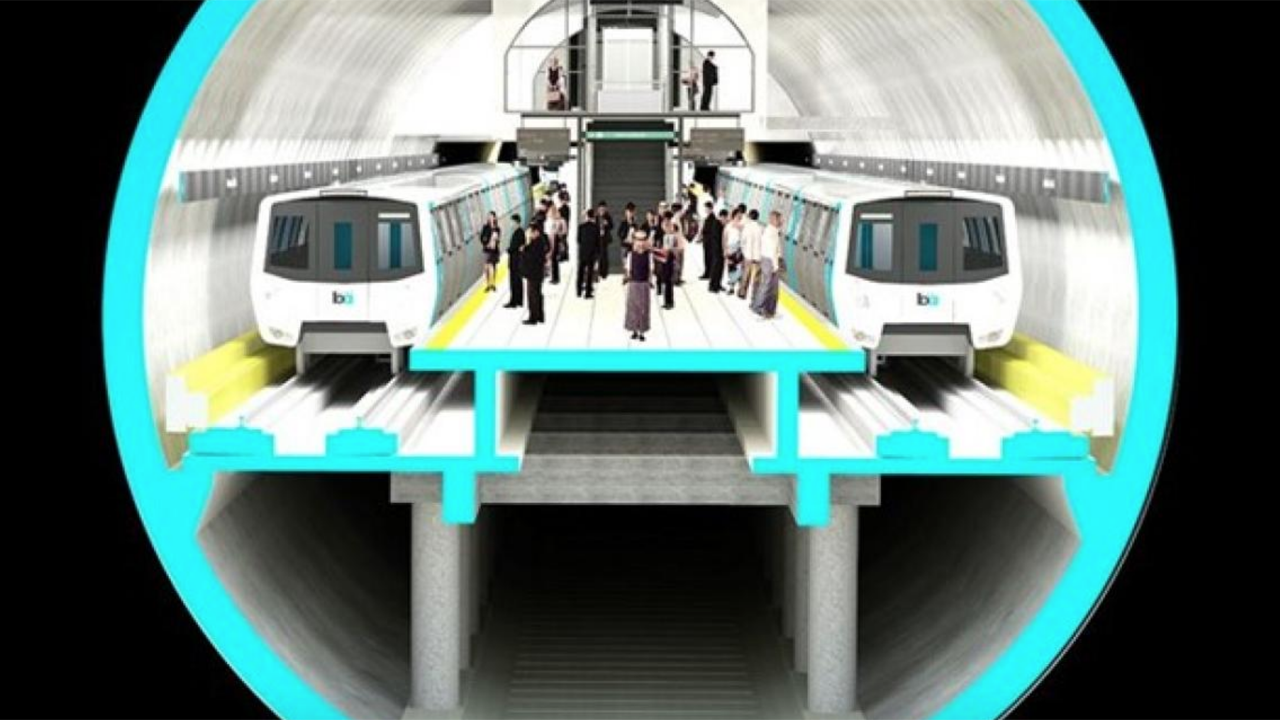
CalSTA awarded Santa Clara Valley Transportation Authority (VTA) $375 million for the six-mile, four-station BART Silicon Valley Phase II Extension Project that will bring BART service to downtown San Jose and Santa Clara. Project completion is scheduled for 2033.
San Francisco Bay Area Rapid Transit District (BART) and Peninsula Corridor Joint Powers Board (Caltrain) are among the 14 California agencies that will share $2.515 billion in TIRCP (Transit and Intercity Rail Capital Program) grants from CalSTA (California State Transportation Agency) for rail-related projects.
CalSTA on Jan. 31 awarded $2.538 billion to 16 ongoing public transportation projects statewide, representing the first round of awards as part of a sixth cycle of TIRCP investment, according to the California Governor’s Office, which noted that the 16 projects received grants in previous TIRCP cycles, and the additional state resources “will help fill funding gaps to complete construction while protecting and leveraging significant federal and local investments.”
TIRCP was created by Senate Bill 862 to provide grants from the Greenhouse Gas Reduction Fund to fund “transformative improvements that modernize California’s intercity, commuter, and urban rail systems, and bus and ferry transit systems, to significantly reduce emissions of greenhouse gases, vehicle miles traveled and congestion.” The most recent round of funding was provided as part of last year’s state budget.
Following is a list of award recipients for rail-related projects. (For all projects, plus details, scroll down for a PDF download.)
• BART, $250 million for the Transbay Corridor Core Capacity Program: According to CalSTA, this supplemental funding from TIRCP will “facilitate completion of construction of this key project, which is adding capacity and frequency to the BART system,” and will “ensure that it maintains access to its $1.16 billion Full Funding Grant Agreement (FFGA) from the Federal Transit Administration (FTA).” Project completion is scheduled for 2030, at which time 10-car trains and 30 trains per hour will be able to operate in each direction through the Transbay Tube linking San Francisco and Oakland, boosting capacity using the existing tunnel, according to CalSTA. (BART currently has the capacity to operate a maximum of 23 trains per hour in each direction.) The program includes a new train control system, 306 additional new railcars, new traction power substations, and a new railcar storage yard. “Increasing the frequency of trains and enhancing reliability are the types of capital improvements we need to attract riders back to BART,” BART Board President Janice Li said. BART reported that the Transbay Corridor Core Capacity Program “has already secured $1.17 billion through a federal grant but costs have increased in the wake of the pandemic due to supply chain challenges and inflation.” It said it “is looking to close a remaining funding gap of about $700 million to complete the 10-year program.”
• Capitol Corridor Joint Powers Authority (CCJPA), $30 million for the Sacramento to Roseville Third Track Project: According to CalSTA, this supplemental funding for the project will “facilitate completion of its full funding plan necessary to leverage $42.51 million applied for in a 2022 Federal Railroad Administration (FRA) Consolidated Rail Infrastructure and Safety Improvements (CRISI) application; the $25 million applied for in its state- and regionally-prioritized SB1 Solutions for Congested Corridor Program (SCCP) application; and to provide full access to its existing and reserved state and local funds.” Project completion is scheduled for 2028, at which time three round-trip trains will operate on the Capitol Corridor to the Bay Area, up from one today, reported CalSTA, which noted that the project “also lays the foundation for future additional frequencies.” Access to award funds is contingent on CRISI and SCCP funds being awarded.
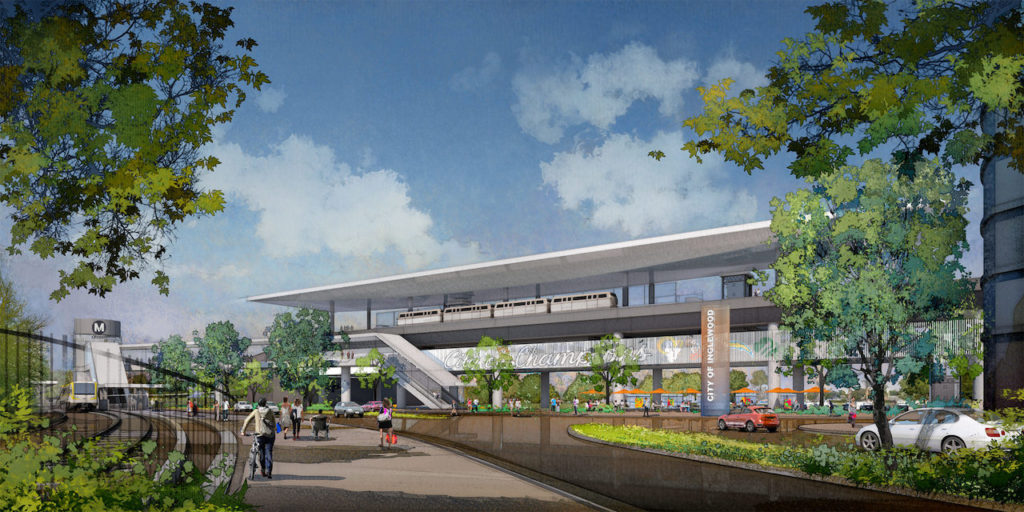
• City of Inglewood, $407.364 million for the Inglewood Transit Connector: The 1.6-mile people mover project is receiving supplemental funding “to complete its full funding plan necessary to leverage a $784 million FFGA in the New Starts Program from the FTA [Federal Transit Administration],” CalSTA reported. Project completion is scheduled for 2028, allowing service to begin in support of the 2028 Los Angeles Summer Olympics. Meeting this timeline is expected to need execution of an FFGA by the end of December 2023, according to CalSTA, and this award is contingent upon the project “receiving favorable ratings from the FTA that allow it to advance to an FFGA.” (The Los Angeles County Metropolitan Transportation Authority Board of Directors on Jan. 26 approved an MCA with the city of Inglewood.)
• Los Angeles County Metropolitan Transportation Authority (LACMTA), $600 million for the East San Fernando Valley (ESFV) Light Rail Transit Corridor: This project is receiving supplemental funding to facilitate execution of its FFGA for $908.8 million from the FTA Expedited Project Delivery Program, for which it has a Letter of Intent, according to CalSTA. Completion of the 6.7-mile initial segment between the Van Nuys/Orange Line and Van Nuys/San Fernando stations is expected by 2030. This award is contingent on final execution of the FFGA with FTA, according to CalSTA. The ESFV project, which was already environmentally cleared and broke ground for advanced utility relocation in December 2022, is planned to connect with both the Van Nuys Metrolink/Amtrak Station as well as the Metrolink station at Sylmar/San Fernando to provide riders with greater interregional connectivity.
• Los Angeles–San Diego–San Luis Obispo Rail Corridor Agency (LOSSAN), $17.016 million for corridor hardening: The corridor hardening component of the Building UP: LOSSAN North Improvement Program is receiving $6.610 million to complete the Ventura County Rincon Point Slope Repairs and $10.406 million to complete the Santa Barbara County Hollister Ranch Repairs and Drilled Piers projects, “providing matching funds that will be used to leverage federal funding for four additional corridor hardening projects in the corridor,” according to CalSTA. The LOSSAN rail corridor spans 351 miles.
• LOSSAN, $14 million for the Central Coast Layover Facility: LOSSAN, which manages the Amtrak® Pacific Surfliner® service, will use the funds for the Central Coast Layover Facility, a component of the Building Up Control: LOSSAN Service Enhancement Program. The funds will complete phase one of the three-phase project and serve as “matching funds that will be used to leverage federal funding for the full facility build out,” CalSTA reported. Once complete in 2026, this project will increase total overnight storage and maintenance capacity in San Luis Obispo, allowing for service growth on the Central Coast both north and south of San Luis Obispo, according to CalSTA.
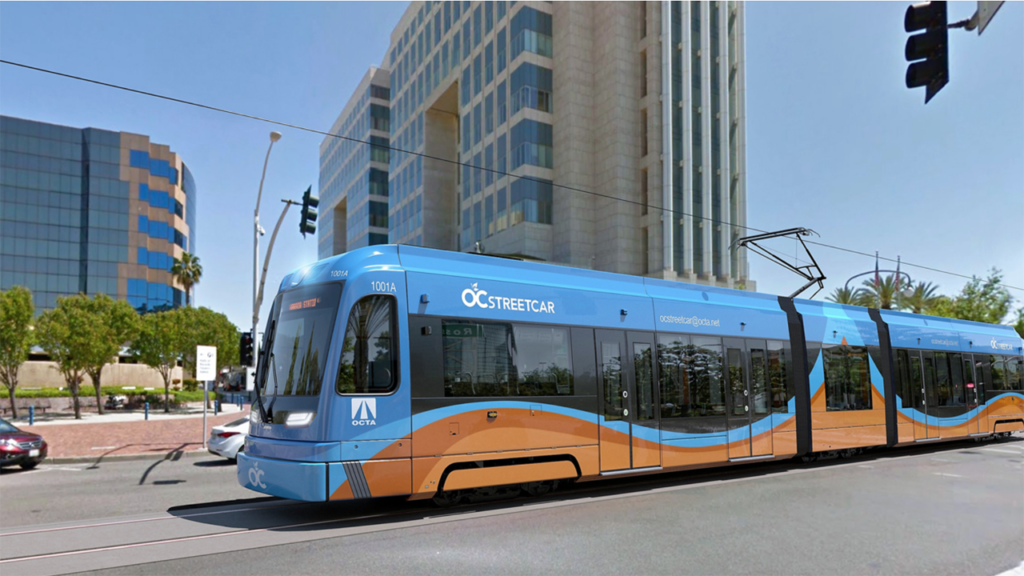
• Orange County Transportation Authority (OCTA), $149.841 million for OC Streetcar: According to CalSTA, this supplemental funding from TIRCP will fully fund completion of construction of the OC Streetcar project, which is adding 4.15 route-miles of new light rail transit in Orange County’s Santa Ana and Garden Grove, and will “ensure that it maintains access to its $149 million FFGA from the FTA.” Project completion is scheduled for 2024. This funding will allow OCTA “to retain sufficient reserves to cover remaining project risks and cost increases, which are expected to lead to a further increase in the project budget,” CalSTA reported.
• Peninsula Corridor Joint Powers Board (PCJPB), $367 million for the Peninsula Corridor Electrification Project: This supplemental funding will fully fund completion of the project, which includes electrifying the Caltrain commuter rail corridor between San Jose and San Francisco as well as acquiring new electric multiple units (EMU) for service, according to CalSTA, which noted the funding will also ensure that the project “maintains access to its $647 million FFGA from FTA.” Project completion is scheduled for 2024. “We appreciate that the state recognizes the importance of Caltrain electrification and we are excited to now have the funding necessary to complete the project in 2024,” Caltrain Executive Director Michelle Bouchard said. “Electrification of Caltrain will be a transformative experience for our riders, with more frequent service and enhanced amenities. Not only will it significantly decrease greenhouse gas emissions, it is a major advancement for transit in the Bay Area, connecting communities to a transportation network they deserve.” Caltrain recently received $43M in federal funding for the Electrification Project as part of the omnibus spending bill, which passed Congress and was signed by President Biden in December 2022. The combination of these federal and state funds means Caltrain has filled the $410 million funding gap that was identified in late 2021, Caltrain reported.
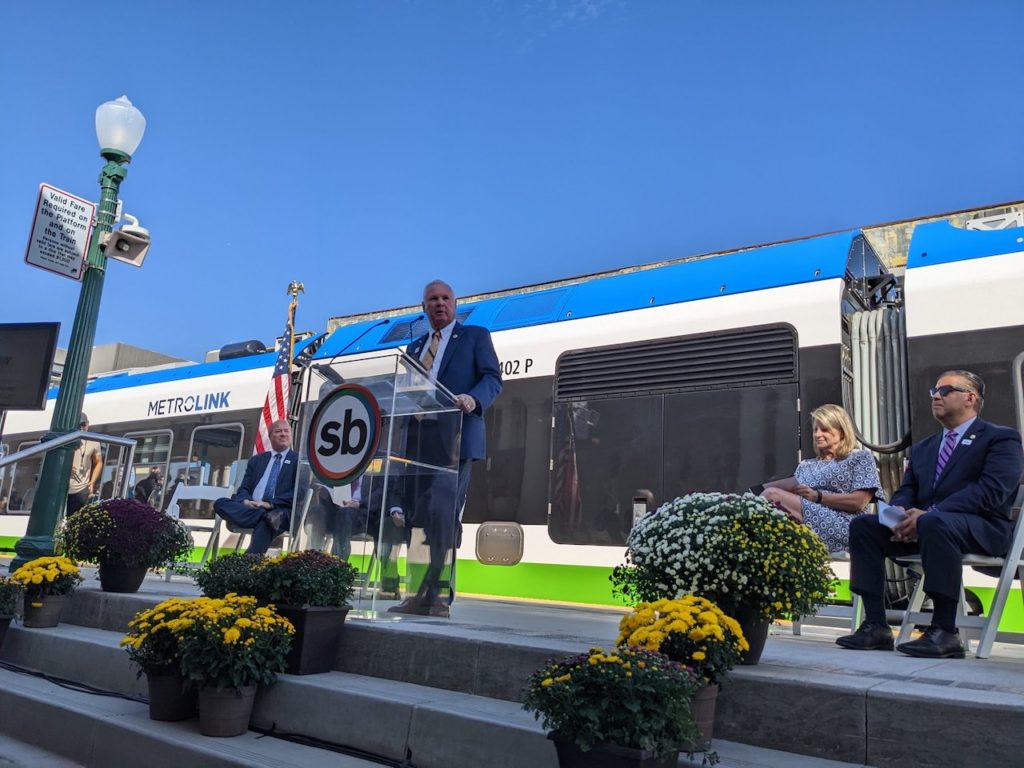
• San Bernardino County Transportation Authority (SBCTA), $15.772 million for the DMU to ZEMU–Diesel Multiple Unit (DMU) Vehicles to Zero-Emission Vehicle (ZEMU) Conversion: This supplemental funding will be used “to fully fund” the introduction of zero-emission multiple unit trains on the Redlands Passenger Rail project, which will be delivered for testing in 2023 and revenue service in 2024, CalSTA said. The funding award leverages additional locally directed transit funding, according to CalSTA. The equipment will be used on the new nine-mile SBCTA San Bernardino Transit Center-University of Redlands line alongside Arrow low-emission Stadler FLIRT DMUs. The line launched in October 2022.
• San Joaquin Joint Powers Authority (SJJPA) and San Joaquin Regional Rail Commission (SJRRC), $141.9 million for the Valley Rail Project: SJJPA and SJRRC are receiving supplemental funding “to bring the most critical project components of the Valley Rail Project to fully funded status, maintaining significant federal discretionary funding committed to the project and providing the opportunity to leverage additional federal funds,” according to CalSTA. Investments from this supplemental funding, it said, will ensure completion of nine project components spanning the ACE (Altamont Corridor Express) and San Joaquin service area. Those components include: Natomas and Elk Grove stations in the Sacramento region; Stockton Diamond grade separation and North Lathrop Transfer Station; Manteca, Modesto, Ceres and Madera station projects; and 10-car ACE platform extensions at Lathrop/Manteca, Tracy, Vasco Rd, Livermore and Pleasanton stations. The project will open in phases starting in 2025.
• Santa Barbara County Association of Governments (SBCAG), $5.559 million for the Goleta Train Depot Improvements project: This supplemental funding will “bring the project to fully funded status, leveraging additional local funding provided,” according to CalSTA. The project will deliver a multi-modal station with improved customer amenities and active transportation and transit access. Project completion is anticipated for 2025.
• Santa Clara Valley Transportation Authority (VTA), $375 million for the BART Silicon Valley Phase II Extension Project: This supplemental funding will facilitate completion of project construction and “ensure that VTA successfully executes its $4,602,900,000 FFGA from the FTA,” reported CalSTA. The six-mile, extension—which includes three underground stations (28th Street/Little Portugal, Downtown San José, and Diridon), one at-grade station (Santa Clara), a maintenance facility, and five miles of subway tunnel—will bring BART service to downtown San José and Santa Clara from the current terminus at the Berryessa/North San José station. Project completion is scheduled for 2033. This award is contingent on final execution of the FFGA with FTA, according to CalSTA. “This will make getting around the Bay Area easier and help alleviate bumper-to-bumper traffic congestion,” Santa Clara County Supervisor and Metropolitan Transportation Commission Commissioner Cindy Chavez said. According to VTA, early pre-construction activities are expected to start this spring with major construction beginning next year. (The 10-mile BART Phase I Berryessa Extension Project opened in 2020; it begins south of BART’s Warm Springs Station in Fremont, proceeds through Milpitas and ends in the Berryessa area of north San José.)
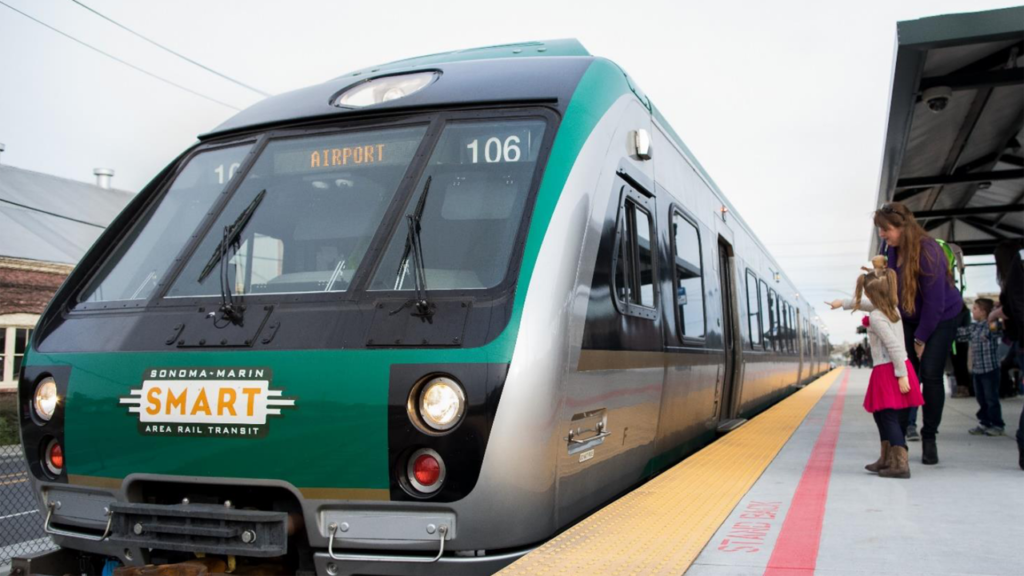
• Sonoma-Marin Area Rail Transit (SMART), $34.338 million for the Larkspur to Windsor Corridor Project: This supplemental funding will facilitate completion of the Sonoma County Airport-to-Windsor extension construction as well as the project development activities necessary to start construction to Healdsburg, “maintaining federal grants and additional local funds provided to the project and fully completing the project components funded in TIRCP Cycle 3,” CalSTA reported. “Funding will allow for design-build contracting methods to be used for completion of Windsor construction, which was 30% complete when suspended in 2021, and to advance Healdsburg through design and into construction with leveraged RM 3 [Regional Measure 3] funding.” With these TIRCP funds, SMART “will take another big step forward in its goal to reach Windsor, Healdsburg and Cloverdale,” SMART General Manager Eddy Cumins said. “Investing in SMART’s rail and pathway system leverages significant long-term local investments in the community. One of the reasons we were successful in this grant application, is the wide support we received from our elected representatives, cities, school districts, community stakeholders, and chambers of commerce.” (SMART on Jan. 26 reported that a recent California Supreme Court ruling has dismissed a lawsuit challenging RM 3, which was approved by voters in July 2018, to help solve the Bay Area’s growing congestion problems through bridge toll funds collected and applied toward construction of highway and transit improvements. The RM 3 toll revenues will be used to finance $4.45 billion of planned highway and transit improvements, including $40 million allocated for extending the SMART rail system and bicycle/pedestrian pathway to Windsor and to Healdsburg.)
• Southern California Regional Rail Authority (Metrolink), $106.9 million for the El Monte Siding & Station Improvements, Fullerton Junction Reconfiguration & Fullerton to Esperanza 3rd Track, and Simi Valley Double Track project components: “Metrolink is receiving funding to fully fund three critical SCORE [Southern California Optimized Rail Expansion] project components that provide key capacity and safety improvements in Los Angeles, Orange and Ventura counties,” CalSTA reported. “Funding will maintain $32 million of FRA CRISI and State of Good Repair funding, and will realize the full benefits of a $4.8 million Federal Highway Administration commuter rail safety grant.” Project completion is scheduled for 2027. SCORE is a capital improvement program to upgrade regional rail infrastructure enabling bi-directional passenger rail service every 30 minutes throughout the day, according to Metrolink. In addition to increasing capacity, SCORE will modernize rail signaling, grade crossings and provide for other safety improvements. The El Monte Siding & Station Improvements project will provide safety improvements, including pedestrian gates and warning devices at the Tyler Avenue grade crossing, and new pedestrian crossings at the station. The third-track project will construct a 10-mile track to improve rail mobility through the cities of Fullerton, Anaheim, Placentia and Yorba Linda. The Simi Valley Double Track Project will upgrade passenger rail service along Metrolink’s Ventura County Line at the Simi Valley Station.

CalSTA is slated to award another $1.14 billion to new transit projects and improvements “at high-priority intersections where rail lines and public streets” meet by the end of April, according to the California Governor’s Office.
“These historic investments in transit and intercity rail projects will help get these transformative projects over the finish line and into operation so the people of California can enjoy more of the mobility, safety, environmental and equity benefits that come with riding transit,” Transportation Secretary Toks Omishakin said. “With billions of additional state investments in the pipeline, more upgrades are on the way—putting California transit agencies in a strong position to compete for significant federal infrastructure funding to deliver even more improvements.”



